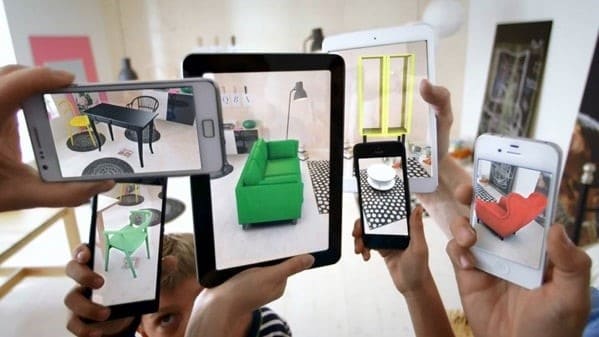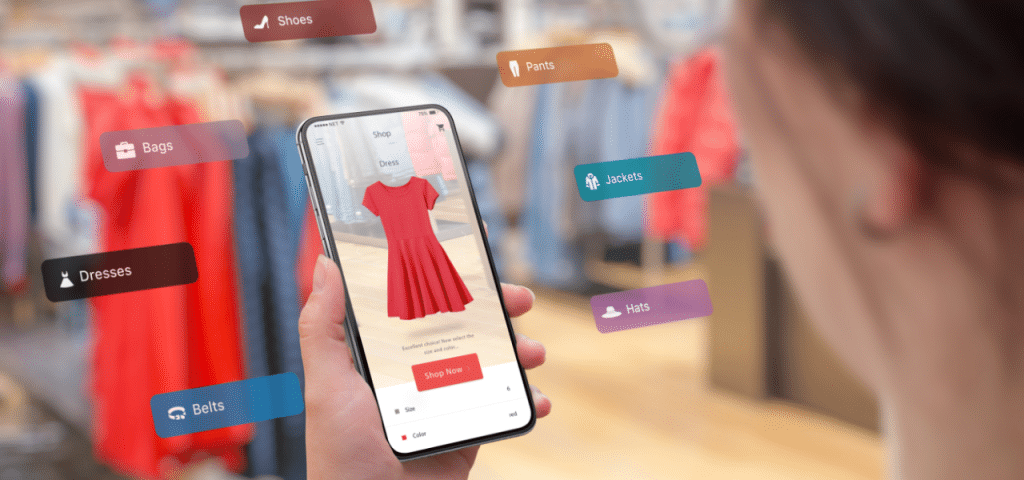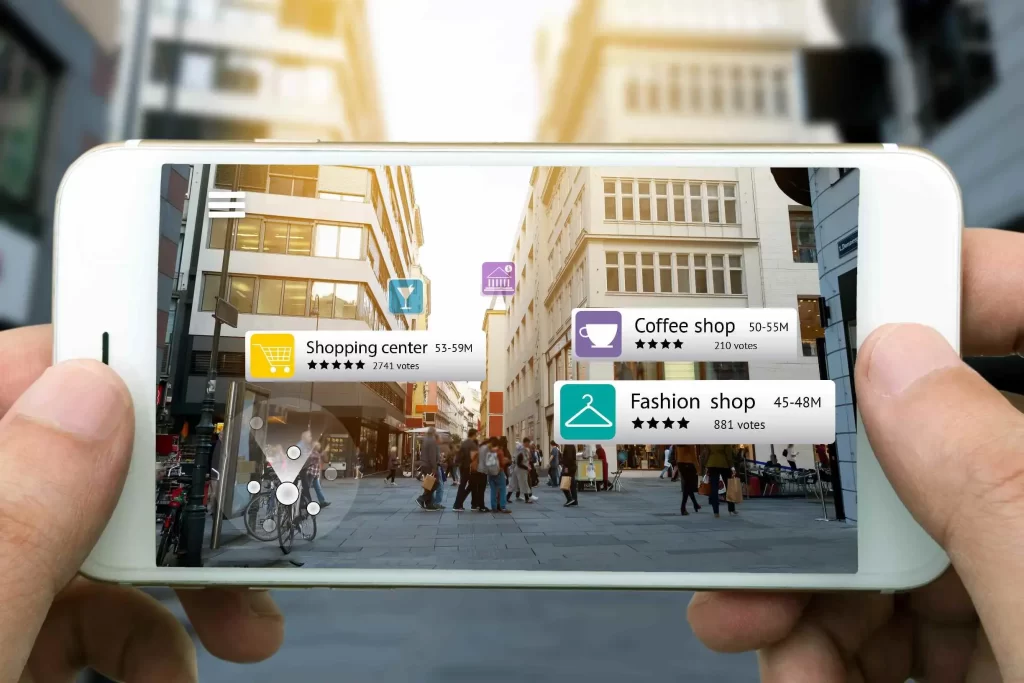The fusion of augmented reality technology with the realm of ecommerce has opened up a realm of possibilities for the future of online shopping.
As consumers increasingly seek immersive experiences and personalized interactions, the integration of augmented reality for ecommerce offers a new dimension to the way we browse, select, and purchase products.
By blending digital elements with the physical world, this innovative approach not only enhances the shopping experience but also raises intriguing questions about the evolution of consumer behavior and the potential for unprecedented levels of engagement.
The impact of this integration extends beyond mere visual enhancement, promising to revolutionize the way we perceive and engage with online retail spaces.
The Future of Shopping: Augmented Reality for Ecommerce
The future of shopping in ecommerce is being reshaped by the integration of augmented reality technology.
This innovative tool allows customers to visualize products in their own space before making a purchase, enhancing the online shopping experience.
Understanding how augmented reality for ecommerce is revolutionizing the way consumers interact with products is crucial for businesses looking to stay competitive in the ecommerce landscape.
Understanding Augmented Reality Technology in Ecommerce
Augmented reality technology in ecommerce is revolutionizing the way consumers shop online by offering personalized shopping experiences. Through AR, customers can virtually try on products, visualize how items look in their space, and receive tailored product recommendations based on their preferences.
This innovative technology is shaping the future of ecommerce by enhancing customer engagement and satisfaction.
Personalized Shopping with Augmented Reality
Enabling personalized shopping experiences through the integration of augmented reality technology is revolutionizing the landscape of ecommerce.
Augmented reality for ecommerce allows customers to visualize products in their own space before purchasing, enhancing the shopping experience.
This technology bridges the gap between online and physical retail, offering a more interactive and tailored way for consumers to engage with products, ultimately driving sales and customer satisfaction.

How Augmented Reality is Transforming Online Retail
Augmented Reality for ecommerce is revolutionizing the landscape of online retail by enhancing consumer engagement in ecommerce platforms. Through the integration of AR technology, customers can interact with products virtually, leading to a more immersive and personalized shopping experience.
This transformation is reshaping how businesses showcase their offerings and how consumers make purchasing decisions in the digital realm.
Consumer Engagement Through Augmented Reality in Ecommerce
Augmented Reality for ecommerce is revolutionizing the online retail landscape by enhancing consumer engagement in ways previously unimagined.
Through the integration of AR technology, customers can now interact with products virtually, creating a more immersive and personalized shopping experience.
This transformation in online retail marketing signifies a shift towards a more interactive and dynamic approach to e-commerce.
Augmented Reality and the Future of Retail Marketing
In the ever-evolving landscape of online retail marketing, the integration of augmented reality technology is reshaping the way consumers engage with products and brands.
Augmented reality for ecommerce enhances the shopping experience by allowing customers to visualize products in real-world settings before making a purchase.
This innovative approach not only increases consumer confidence but also fosters a deeper connection between the brand and the shopper, leading to enhanced customer satisfaction and loyalty.
The Impact of Augmented Reality on Consumer Behavior
When incorporating augmented reality technology into ecommerce platforms, consumer behavior undergoes a significant transformation, influencing decision-making processes and purchase patterns. Augmented reality (AR) enables consumers to visualize products in a more realistic manner, bridging the gap between online shopping and in-store experiences. By allowing customers to see how products would look or fit in their own environment before purchasing, AR enhances consumer confidence and reduces hesitation in making buying decisions.
One key impact of AR on consumer behavior is the increase in engagement levels. By offering interactive and immersive experiences, AR captures the attention of consumers and keeps them more engaged with the products. This heightened engagement often leads to longer browsing sessions and a higher likelihood of conversion.
Moreover, AR has been shown to decrease product return rates. When consumers can virtually try out products before buying, they are more likely to be satisfied with their purchases, ultimately reducing the need for returns due to discrepancies between expectations and reality.
Additionally, AR influences impulse buying behavior. The ability to see products in a more tangible way through AR can trigger impulsive purchasing decisions as consumers feel more connected to the products and their benefits. This can result in increased sales and higher customer satisfaction levels.
Innovative Augmented Reality Features Enhancing Ecommerce
The integration of cutting-edge augmented reality for ecommerce features is revolutionizing the landscape of ecommerce platforms, elevating the online shopping experience for consumers. One innovative feature that is enhancing ecommerce is virtual try-on capabilities. This feature allows customers to virtually try on products such as clothing, accessories, or even makeup before making a purchase, providing a more personalized and interactive shopping experience.
Another groundbreaking augmented reality feature is spatial awareness technology. By utilizing this technology, ecommerce platforms can enable customers to visualize how products will look and fit in their physical space. For example, furniture retailers can allow customers to see how a sofa will look in their living room or how a coffee table will fit in their space, making the decision-making process easier and more accurate.
Moreover, interactive product visualization is being enhanced through augmented reality, enabling customers to interact with products in a three-dimensional space. This feature provides a comprehensive view of the product from different angles, allowing customers to examine details up close as if they were in a physical store.

Augmented Reality: A New Frontier in Online Shopping Experience
Augmented Reality is revolutionizing the online shopping experience by presenting both challenges and opportunities for ecommerce businesses.
As this technology continues to evolve, companies must navigate the complexities of implementation while also embracing the potential for enhanced customer engagement and conversion rates.
Balancing these factors is crucial in leveraging Augmented Reality as a powerful tool for transforming the way consumers interact with products in the digital realm.
Challenges and Opportunities in Implementing Augmented Reality
Implementing augmented reality for ecommerce presents both challenges and opportunities, particularly in measuring its success within online shopping platforms. Understanding the effectiveness of AR technology in enhancing customer experiences and driving sales is crucial for businesses looking to stay competitive in the digital marketplace.
Measuring the Success of AR in Ecommerce Platforms
In the realm of ecommerce, evaluating the effectiveness of augmented reality technology presents a crucial measure of success for online shopping platforms.
Key performance indicators such as conversion rates, customer engagement levels, and return on investment are instrumental in determining the impact of AR integration.
Tracking metrics related to user interaction, sales uplift, and customer satisfaction can provide valuable insights into the overall effectiveness of AR in enhancing the shopping experience.

Conclusion
In conclusion, the integration of augmented reality for ecommerce has revolutionized the online shopping experience by providing immersive and interactive features that enhance consumer engagement and decision-making.
The adoption of augmented reality technology in online retail is reshaping the way consumers interact with products and brands, ultimately leading to a more personalized and memorable shopping experience.
As this technology continues to evolve, the future of ecommerce looks promising with augmented reality for ecommerce playing a key role in shaping the future of online shopping.
Can Augmented Reality Be Used to Personalize the Shopping Experience for Individual Customers?
Augmented reality can indeed personalize the shopping experience for individual customers by offering tailored product recommendations, virtual try-on features, and interactive visualization of items in real-world settings, enhancing engagement and satisfaction levels.
What Are the Potential Privacy Concerns Associated With Using Augmented Reality in Ecommerce?
Privacy concerns associated with integrating augmented reality in ecommerce include data security risks, potential for unauthorized data collection, and invasion of personal space. Transparency, consent mechanisms, and robust data protection measures are critical for addressing these challenges.
How Does Augmented Reality Impact the Environmental Sustainability of Online Shopping?
Augmented reality can enhance online shopping experiences by reducing the need for physical shopping trips, potentially decreasing carbon emissions. However, the technology’s energy consumption and production of electronic waste must be considered to evaluate its overall impact on environmental sustainability.


